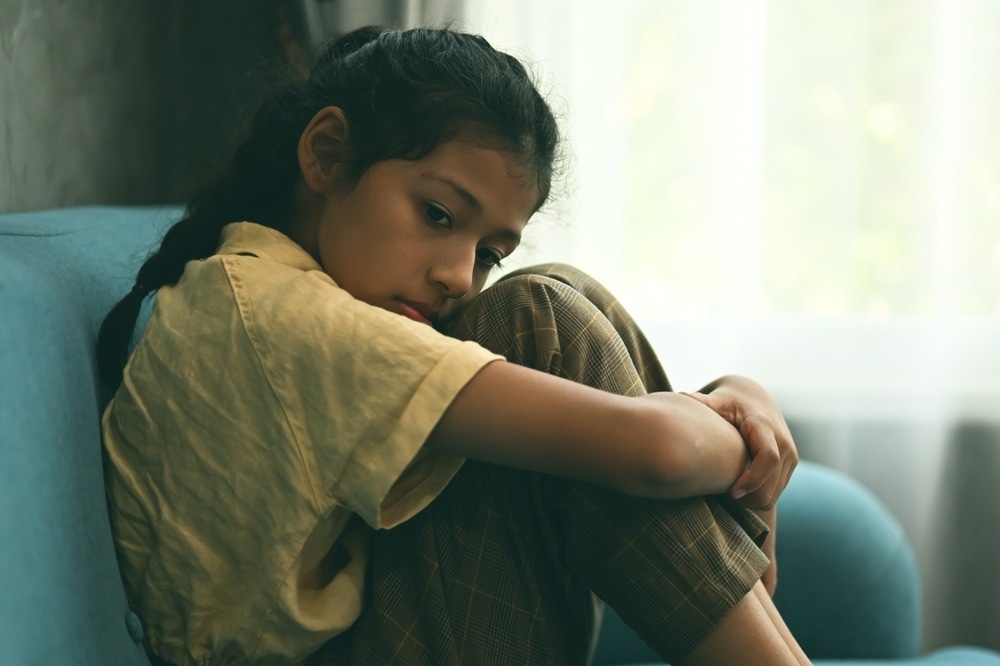They used cohort data from 2015-16 (Wave 1) to 2018-19 (Wave 2) of the Understanding the Lives of Adolescents and Young Adults (UDAYA) project survey conducted in Uttar Pradesh and Bihar for this study.
 Study: Bidirectional and cross-lag relationship between social media use and psychological wellbeing: evidence from an Indian adolescent cohort study. Image Credit: 1st footage/Shutterstock.com
Study: Bidirectional and cross-lag relationship between social media use and psychological wellbeing: evidence from an Indian adolescent cohort study. Image Credit: 1st footage/Shutterstock.com
Background
Social media hugely influences adolescents and young adults. However, there is a critical gap in existing research on the impact of social media use on the mental health of young adolescents, which primarily comprises cross-sectional studies from Western countries.
There is a lack of understanding of how this trend changes over time and manifests in developing countries, such as India, where there were 518 million social media users in 2020, a figure expected to rise to ~1.5 billion by 2040.
About the study
In the present study, researchers longitudinally track changes in social media use and its impact on the mental health of Indian adolescent boys and girls over three years.
They first assessed its immediate effect in between- and within-subject analyses; next, they investigated the bidirectional relationship over its developmental stages, allowing a holistic examination of the relationship between social media use and depression.
The study population encompassed younger and older adolescents aged 10-14 and 15-19, respectively. They were interviewed at the baseline (Wave 1) and followed up in 2018-19 (Wave 2) when they reached the ages of 13-17 and 18-22 years, respectively, to shed light on the factors that determine successful transitions to adulthood and establish the levels, patterns, and trends in their situation.
The team evaluated depressive symptoms in adolescents in the past two weeks only using nine questions, which they rated on a scale of four, and STATA 14 generated a total score out of 27, which helped the team categorize depressive symptoms into four categories: no, mild, moderate, and severe. Likewise, they evaluated the frequency and duration of social media use.
Predictor variables measured at Wave 1 were age, gender, mother's education, and wealth index. Variables measured at both Waves 1 and 2 were current schooling, paid work, substance use, and social media use.
Further, the team used binary logistic regression to analyze the association between depression and these variables, including social media use. They also conducted a longitudinal cross-lagged path analysis to examine the bidirectional relationships between social media use and depressive symptoms in adolescents.
The team applied five models to assess the bi-directional influence of social media use and psychological wellbeing over time. Finally, they determined the best-fitting model using various criteria, such as chi-square value, Akaike Information Criterion (AIC), comparative fit index (CFI), root mean square error of approximation (RMSEA), and Chi-square difference testing, where, for instance, CFI of 0.95 or more, and RMSEA of 0.05 or less indicated the best fitting model.
Results
The sample size for the present study was 4,428 boys and 7,607 girls (12,035 adolescents) aged 10-19 in Wave 1 and 4,428 adolescent boys and 11,864 adolescent girls (16,292 adolescents) aged 13–23 years in Wave 2.
The study results showed that access to the internet among adolescent boys and girls increased from Wave 1 to Wave 2 (25.3% to 70.2% and 6.6% to 38.5%), which, in turn, increased their social media usage, with a significant difference between boys and girls (13.9 % to 57.6% and 3.8% to 26.6%).
From Wave 1 to Wave 2, a higher percentage of adolescent girls experienced mild and severe depressive symptoms, whereas mild depressive symptoms increased slightly among boys than girls from Wave 1 to Wave 2 (5.9% to 7.3% vs. 12.6% to 18.4%). This vulnerability of adolescent girls is attributable to the social pressure they go through in the digital world.
In logistic regression analysis, age emerged as a key predictor of depressive symptoms in adolescents; adolescents aged 15-19 were twice as likely to have depressive symptoms than their younger counterparts, OR=2.762.
Education acted as a barrier to depression; thus, educated adolescents were less depressed than uneducated ones. Likewise, the wealthier adolescents were more likely to be depressed than their poorer counterparts.
Further, those engaged in paid work and substance abuse in the past year were 18% and 57% more likely to have depressive symptoms. Additionally, dropping out of school was associated with an increased likelihood of depression.
Furthermore, compared to social media non-users, frequent social media users (three or more hours daily) were more likely to be depressed.
Conclusion
Overall, the present study found a significant cross-section degree of association between social media use and depression among adolescent boys and girls in India. Factors like age, gender, and education showed significant relationships with this association.
This study, thus, emphasizes future studies exploring this association based on time, purpose, and type of social media used with mental health problems other than depression.